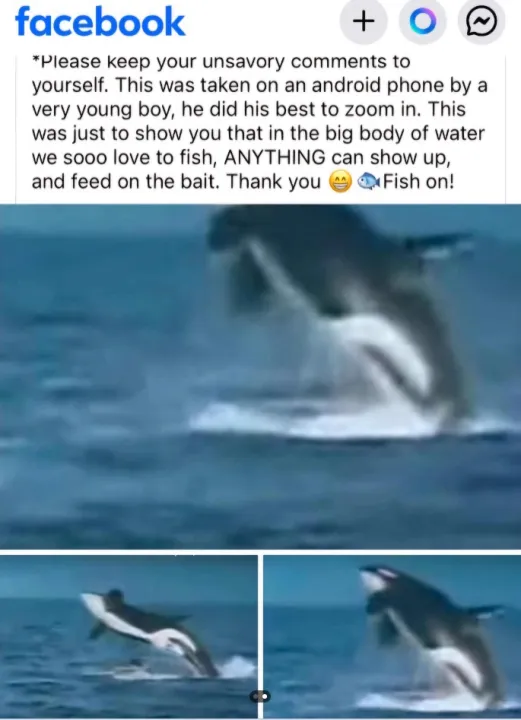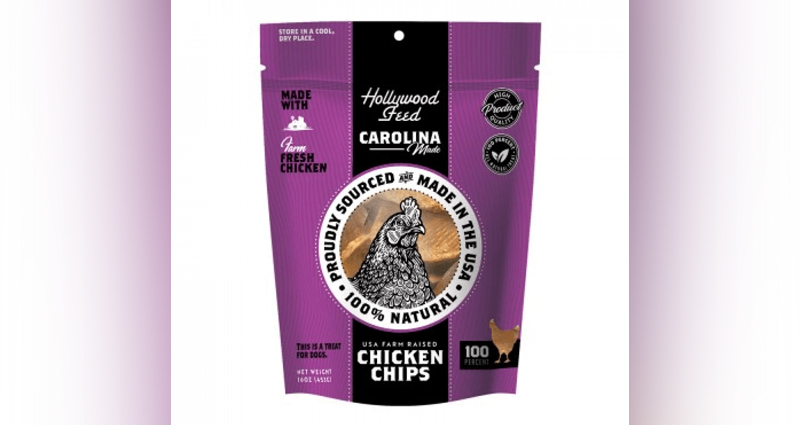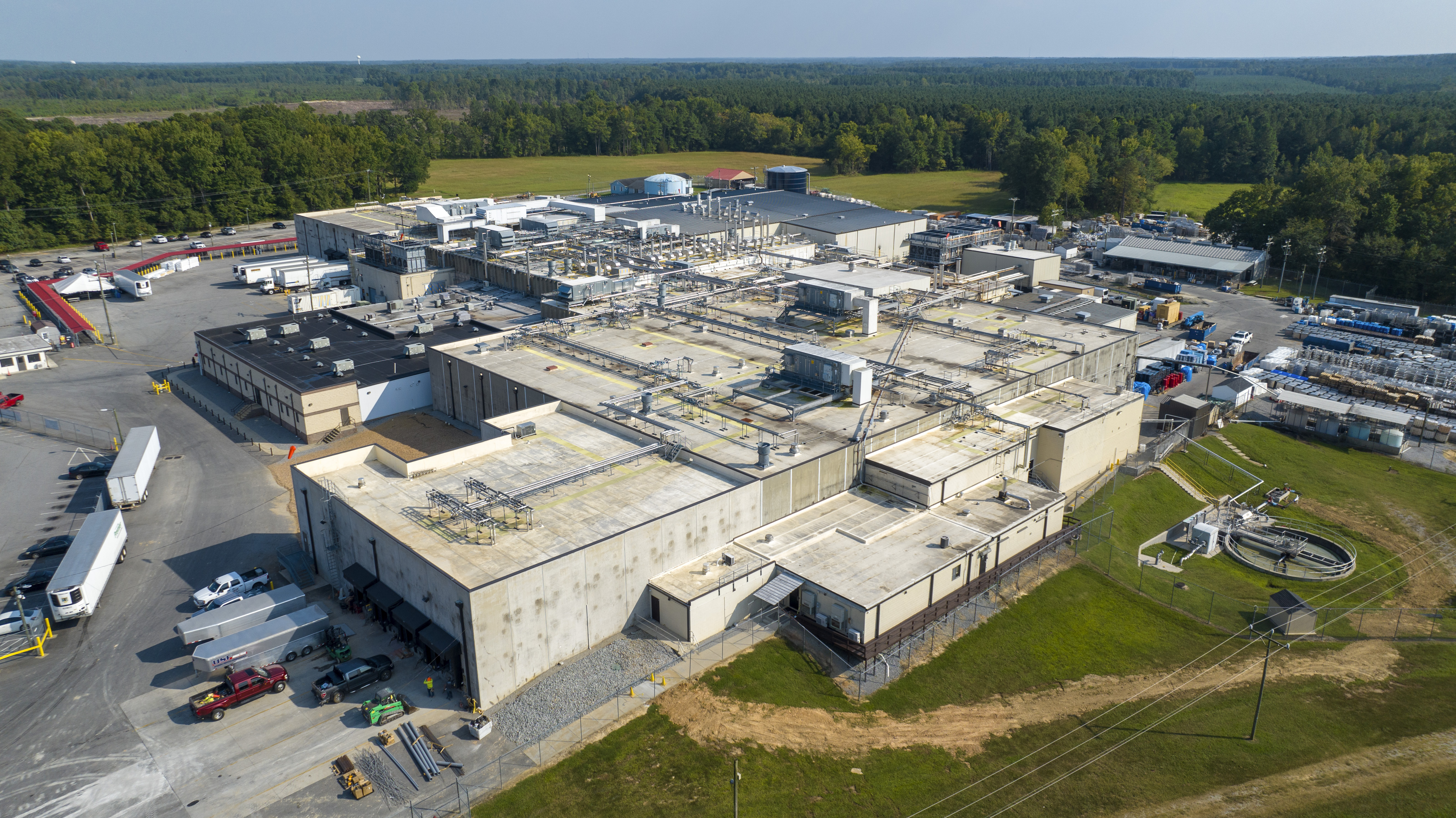CAPE HATTERAS, N.C. (WAVY) — A bunch of big fish tales from the Outer Banks have recently taken off on social media like they’re riding the East Australian Current in “Finding Nemo.”
Some photos included with the stories are clearly fake, but they still racked up thousands of comments and shares, while other more realistic-looking shots are still raising alarm bells — and concerns about misinformation online as a whole.
First, there was a report of an orca spotted off the coast of Cape Hatteras last week that some thought was a little fishy.
The orca report came from North Carolina resident Amiee Dean, who contacted a local fishing shop and state wildlife officials after she said her family spotted the orca on June 12.
She said it happened while the family was at the Point at Cape Hatteras National Seashore, and her son was the one who took the photos, though as the story gained hundreds of shares and likes, some people on social media and elsewhere online started to point out that at least two frames appear to be from an old Powerade commercial (which ironically has been discussed on fact check site Snopes before).

The fishing store has since deleted the post about the orca after taking heat online from those saying the photos were fake.
Dean, though, is sticking with her story.
When reached Thursday, she said “they were completely, 100% orcas” and not the false killer whales, another species that were reportedly spotted the same day. She said others on the beach that day could vouch for her.
“[The photos] are definitely not fake, I can assure you that,” Dean said.

The North Carolina Division of Marine Fisheries said they were looking into the matter, but there was no update as of June 20. If the sighting does prove to indeed be legitimate, it would be just one of a handful in North Carolina’s history. The last confirmed sighting was in 2011.
Meanwhile there are other recent images from an Outer Banks-focused account that 10 On Your Side can definitively say are fake.
Outer Banks Vibes, a page known for its manipulated viral posts, saw several images shared by tens of thousands of people online this week. The posts include stunning images of a pink dolphin off the North Carolina coast — which happen to be A.I.-generated.

Another post shows other photos that could be apparently fake to the average social media users, but they seem to look a little more real than the images above.

One key fact, though, easily gives both versions away: pink dolphins only live in freshwater, specifically the Amazon River.
Outer Banks Vibes, which has also gone by OBX Life, has also acknowledged in the past that many of its posts are made via Photoshop and A.I. A similar fake post claiming to show a beached great white shark racked up the views last year.
The page’s founder, Alex Lex, simply told the North Carolina Rabbit Hole’s Jeremy Markovich in a story last year that “Photoshop + ai = cool photos.” 10 On Your Side reached out to Lex to see if he’d add disclaimers to future posts, but didn’t hear back by the time of publishing.
10 On Your Side spoke with Cayce Myers, a professor with Virginia Tech’s School of Communication who has been tracking the evolution of artificial intelligence, and the now glut of A.I.-generated images online.
“This is something that’s going to continue on as we see A.I. become more and more evolved,” Myers said.
“We’re talking about sea life on the ocean, and it’s fake,” Myers said. “What’s the impact of that societally? Probably not a whole lot, but it does create a reality for some people that is untrue. Where the problem comes into is that it’s high-stakes disinformation [such as political and health disinformation].”
“People are making decisions about themselves, how they’re going to vote,” Myers added. “How they’re maybe going to get treatment or not get treatment for some sort of medical condition, or high stakes societal issues. And you’re predicating that off of disinformation, there’s the problem.”
Myers, though, said unfortunately, A.I. images, which can still many times be detected by things like extra limbs or fingers on the subject or misspelled or blurred words, are evolving rapidly and fakes may not be able to be determined by the naked eye. There’s also an extremely low entry barrier to make A.I. images with free accounts, whereas things like Photoshop still require some degree of skill.
“We’re seeing high levels of visual content that is really good,” Myers said. “Very good graphically and very good in its coloration and it’s realistic portrayals. That is always amplified in terms of disinformation when you can create a deep fake or a voice clone.
“And so, then you see video that seems very realistic, very believable, and that can create a lot of problems, particularly in an election year like 2024 where there’s going to be a proliferation of disinformation.”
Going forward, Myers cautioned people to wait and verify images before sharing them online. He said people sharing manipulated images hope you’ll engage with a like and not question the validity of posts.
“If you see something online that looks a little askew, or looks a little outside of the realm of normality, maybe you need to a dig a little deeper into that. … Do your due diligence,” Myers said. “What is the source of this content? Where am I seeing this content. Am I seeing this content on multiple platforms that are legitimate, that are news sources that have high levels of credibility? If I see this content on some off-brand social, or somewhere I’ve never seen it before, that may be an indicator that it’s fake.”



















































